Are your teeth throbbing after getting or tightening braces? Wondering what you can actually eat without making the pain worse? You’re not alone—and relief might be easier (and tastier) than you think. Discover smart food choices that soothe sore teeth, speed up recovery, and keep you smiling through every phase of orthodontic treatment.
Are You Wondering What Foods to Eat with Braces When You Have Pain?
"Are you struggling with braces pain and unsure what to eat for quick relief? You are not alone. Discover the top foods that soothe sore teeth and help you stay on track with orthodontic treatment."
Having braces can do wonders for your beautiful smile, but braces pain—especially after adjustments—can make every bite feel uncomfortable. The first days with new or tightened braces often bring sore teeth and sensitive gums, making it tough to chew your usual meals. Luckily, choosing the right foods doesn't just reduce pain in the moment; it can also help your orthodontic treatment go more smoothly. This guide will show you what soft foods to eat, which foods to avoid, and how to protect your brackets while enjoying every meal. If you want to eat with braces pain or simply make food prep easier for sore days, you’ll find all the answers below.
What You'll Learn About Foods to Eat with Braces When You Have Pain
Which soft foods and soft snacks are best for braces pain
How to eat with braces without increasing discomfort
Foods to avoid with sore teeth
Expert tips to make eating easier during orthodontic treatment
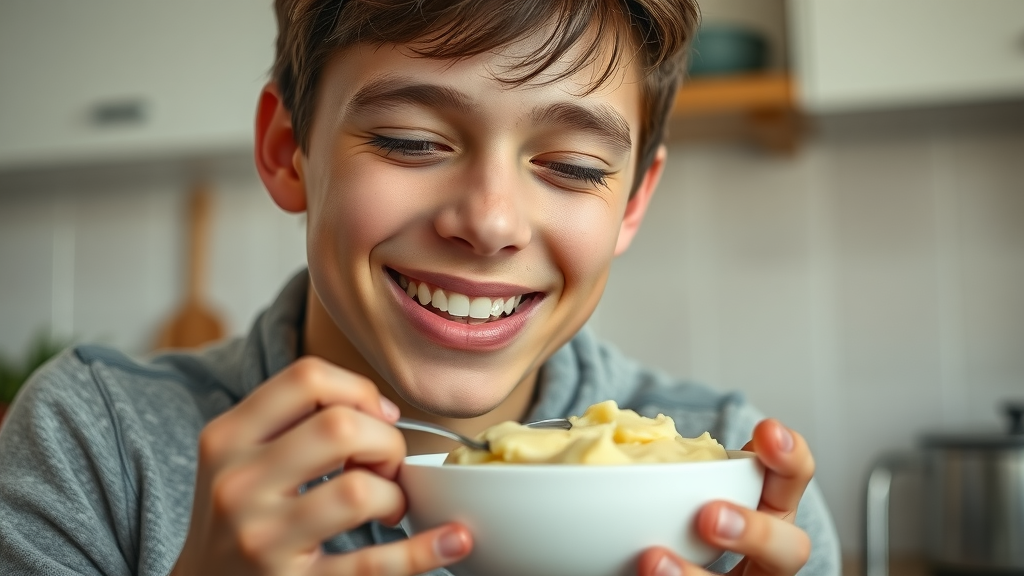
Understanding Braces Pain: Why Food Choices Matter
How Foods to Eat with Braces When You Have Pain Alleviate Discomfort
After an adjustment or recent placement of orthodontic appliances, your mouth is sore and your teeth and gums tender. Choosing soft food and easy to chew options helps minimize extra pressure on your teeth, making it easier to eat with braces while reducing inflammation. Foods to eat with braces when you have pain, like ice cream or mashed potatoes, are gentle and require little chewing, creating less friction with brackets and wires. These food choices don't just keep discomfort down—they also protect your oral health by preventing damage from biting into hard food, which can dislodge brackets or bend wires. By sticking to soft foods for braces when your teeth are sore, you promote healing and help your mouth recover faster from the strain of tightening.
Inflammation is a natural response during orthodontic treatment as teeth shift. Eating soft foods to eat or cool foods can actually reduce inflammation, giving sore teeth a break from heavy chewing. The right foods for braces not only alleviate pain but also provide necessary nutrients to maintain healthy teeth and gums while your beautiful smile takes shape. Making wise food choices during painful periods gives your mouth time to adapt and can even reduce the need for pain relief medication.
Common Causes of Braces Pain and Sore Teeth
Braces pain most commonly happens right after your orthodontist tightens wires or fits new appliances. This pain isn’t a sign that something has gone wrong—it’s a normal (but uncomfortable) part of the process as teeth shift and mouth tissues stretch. Sore teeth may feel extra sensitive when you bite, chew, or even brush. The main culprits making braces pain worse are hard foods that require biting with the front teeth, as well as sticky or crunchy snacks that place extra pressure on sore gums and brackets. If you choose difficult-to-chew foods while your mouth is sore, you could damage your braces or prolong your discomfort.
Not all braces pain is avoidable, but you can manage it by choosing the right foods for braces and eating soft foods to eat during the first few days after an adjustment. Reassuringly, most soreness fades after a few days, especially if you avoid hard foods and stick to soft, gentle meals until your mouth adapts.
Role of Soft Foods for Braces in Recovery
Soft foods for braces are essential during recovery from orthodontic adjustments. Why? Because they’re gentle on teeth and gums, providing nutrition without excessive chewing or pressure. Most orthodontic specialists recommend eating soft foods like silky scrambled eggs, creamy yogurt, and fluffy mashed potatoes the first few days after your braces are tightened. Not only does this ease the transition, but it also protects your brackets and wires from accidental damage due to hard food.
The soft food you choose should be high in nutrients, providing protein, calcium, and vitamins that support oral health and healing. A good mix of options keeps meals interesting and prevents the boredom that comes from eating only one type of food. Adding cold or cool foods for braces pain, like ice cream, can even help numb discomfort and soothe inflammation after an orthodontic appointment.
"Eating the right foods with braces can make the difference between a miserable meal and quick, soothing relief." — Orthodontic Specialist
Best Foods to Eat with Braces When You Have Pain
Top Soft Foods for Braces Pain
Mashed potatoes
Yogurt
Ice cream
Oatmeal
Scrambled eggs
Soup
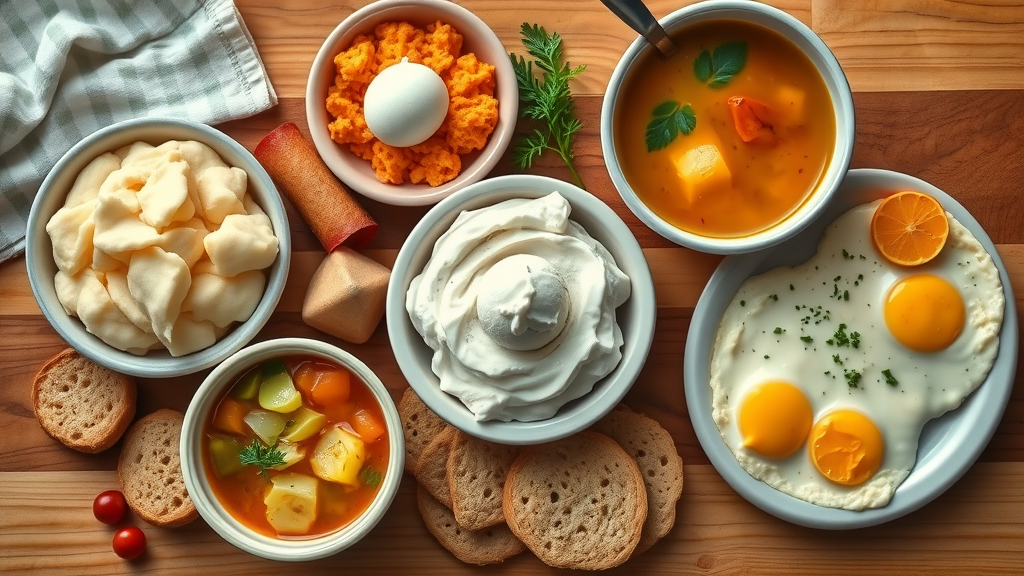
When your teeth and gums are sore, the best foods to eat are those with a soothing texture that require minimal chewing. Mashed potatoes are classic—they’re soft, easy to eat, and can be flavored in lots of different ways. Yogurt is creamy, rich in calcium, and gentle on sensitive teeth, while ice cream offers comfort with its cool temperature and smooth mouthfeel. Oatmeal provides long-lasting energy and fiber, and scrambled eggs are protein-packed and simple to chew. Soup, whether it’s chicken noodle or tomato, delivers warmth, hydration, and essential vitamins while sparing sore teeth from unnecessary work. With this list of soft foods for braces, you can rotate flavors and textures to prevent meal fatigue—turning every bite into gentle relief.
Why Soft Food Options Are Key When Eating with Braces
Eating soft foods is the most important habit when you have braces pain, because soft meals put less pressure on your teeth and brackets. Foods for braces like yogurt, soft scrambled eggs, and warm soups glide easily over sore areas and prevent accidental damage to orthodontic appliances. They also allow for proper nutrition, so your gums and tissues heal quickly after an adjustment. With every bite, you support your overall oral health—by avoiding crunchy foods that can get stuck and lead to tooth decay or breakage.
Choosing the right soft food makes a difference not just for your comfort but also for your orthodontic treatment’s success. By sticking to soft foods for braces during painful periods, you lower the risk of emergencies (like popped wires or broken brackets), which keeps your treatment on track and shortens the overall time you have to wear braces.
Comparison of Popular Soft Foods for Braces Pain Relief |
|||
Soft Food |
Taste & Texture |
Nutrition |
Ease of Prep |
|---|---|---|---|
Mashed potatoes |
Creamy, savory |
Vitamin C, potassium |
Easy (boil & mash) |
Yogurt |
Cool, tangy |
Calcium, protein |
Ready-to-eat |
Ice cream |
Cold, sweet |
Calcium, treats sore gums |
Ready-to-eat |
Oatmeal |
Warm, soft |
Fiber, B vitamins |
Quick-cook |
Scrambled eggs |
Fluffy, mild flavor |
Protein, vitamins A & D |
5 mins cook time |
Soup |
Brothy or creamy |
Depends on variety |
Easy—stovetop or microwave |
Soft Snacks for Braces: Ideas for Quick Relief
Applesauce
Smoothies
Pudding
Cottage cheese
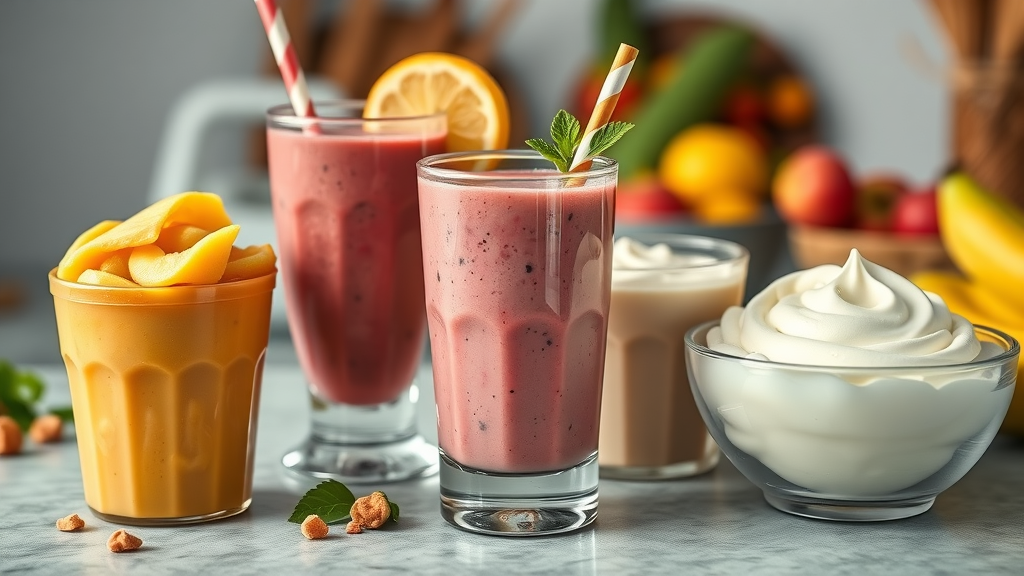
Snacking doesn’t have to be off the table! When you’re dealing with sore teeth, reach for easy to eat options like applesauce, smoothies packed with fresh fruit and yogurt, pudding for a treat, and cottage cheese for a protein boost. All of these snacks are gentle on braces, require no chewing, and help reduce the temptation to eat crunchy foods that could hurt your brackets. You can easily keep these snacks on hand for school, work, or busy afternoons. For more variety, blend a smoothie with banana, berries, and a spoonful of yogurt, or mix cottage cheese with a drizzle of honey for a sweet, filling bite.
Foods to Avoid with Braces When You Have Pain
Foods that Can Worsen Braces Pain or Damage Braces
Crunchy chips
Hard candies
Sticky caramels
Nuts
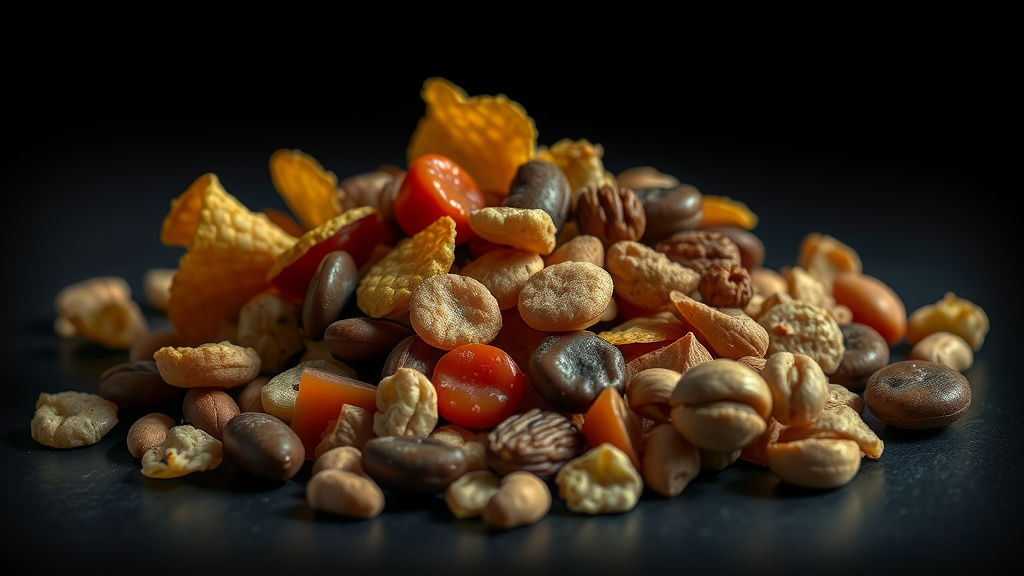
Some foods can make braces pain feel much worse and even cause serious damage to your braces. Crunchy chips and hard candies often require biting with the front teeth, which adds pressure to already sore teeth and gums. Sticky caramels and other chewy sweets can get stuck in wires or brackets, leading to pain, extra pressure, and possible tooth decay. Nuts are hard foods that can break wires or pop off brackets entirely. These foods to avoid with braces might be tempting, but choosing them when your mouth is sore can mean more orthodontic visits and a longer treatment plan.
How the Wrong Food Choice Delays Orthodontic Treatment
Making poor food choices—like reaching for hard candies or sticky snacks—not only increases the pain when you eat with braces, but it can also actually set back your progress by damaging your orthodontic appliances. If a wire bends or a bracket pops off, your orthodontist may have to pause or restart your next steps, sometimes making your overall treatment last longer. Chewing tough types of food when your teeth and gums are already sore just adds to your discomfort and increases your risk of cavities, since stuck food particles become harder to clean away, threatening your oral health.
By committing to foods for braces recommended by your orthodontist and avoiding those that cause extra pressure, you’ll keep your treatment smooth and your beautiful smile on track!
Practical Eating Tips: How to Eat with Braces When You Have Pain
Meal Prep Strategies for Sore Teeth and Soft Foods

Getting more comfortable with braces—especially on sore days—comes down to smart meal prep. Focus on preparing soft foods to eat ahead of time, making your meals easy, healthy, and pain-free. Batch-cook mashed potatoes or scrambled eggs for quick breakfasts or snacks, and keep yogurt cups and applesauce in the fridge for grab-and-go snacks. Soups and smoothies can be made in big batches and portioned for several meals. Involving your family in meal prep not only makes the experience more positive, but encourages good eating habits that will last throughout your orthodontic treatment.
A little planning ensures you always have easy to chew and nutritious foods for braces on hand—even during the most painful days—minimizing your temptation to reach for crunchy or hard foods out of frustration or hunger.
Making Eating Comfortable During Braces Pain
Cut food into small pieces: Small bites are safer for sore teeth and reduce the risk of damaging your braces.
Chew with your back teeth: This helps avoid putting pressure on sore front teeth.
Eat slowly and mindfully: Taking your time gives your teeth and gums a chance to adjust to new textures and temperatures, making mealtimes more enjoyable and less stressful.
Mindful eating is a powerful tool when your mouth is sore from braces pain. Use utensils to break down foods for braces and, if possible, let hot options cool briefly before eating so you don’t irritate sensitive tissues. If drinking through a straw makes sipping easier, use one for smoothies or cold beverages—but avoid hot liquids right after an adjustment, as these can make inflammation feel worse. Practicing these small adjustments means you can eat with braces even during the hardest days, helping you stay nourished and comfortable while your beautiful smile takes shape.
Expert Advice: Managing Braces Pain Through Healthy Food Choices
Recommended Foods for Braces by Orthodontists
"Soft foods can reduce irritation and help your mouth adapt faster to braces." — Dr. Carter, Orthodontist
Orthodontists recommend prioritizing soft foods for braces like mashed potatoes, scrambled eggs, yogurt, and smoothies—these foods are gentle, easy to eat, and full of nutrients that boost recovery. Yogurt and cottage cheese replenish calcium, strengthening teeth through the treatment process. Mashed potatoes and soups make meals hearty while requiring minimal chewing, perfect for days when braces pain is high. Ice cream provides quick relief by numbing sore areas thanks to its cold temperature, and can even lift your spirits during tough stretches of your orthodontic journey.
When choosing foods for braces, always think about nutritional variety: balance proteins, healthy fats, and vitamins to encourage tissue healing and avoid oral health problems. Ultimately, following your orthodontist’s dietary guidelines keeps your treatment on time and your smile shining.
People Also Ask: Foods to Eat with Braces When You Have Pain
What is the best food for braces pain?
Mashed potatoes, yogurt, and ice cream are among the best foods to eat with braces when you have pain due to their soft texture and soothing temperature.
How do I make braces stop hurting so I can eat?
Apply cold foods or drinks, stick to soft foods, and avoid hard or crunchy foods. Over-the-counter pain relief can also help manage discomfort.
Can I bite into food with braces?
It is best to avoid biting into hard foods directly. Instead, cut food into small pieces and chew with your back teeth to minimize pain and avoid damaging braces.
What are soft snacks for braces?
Soft snacks for braces include applesauce, pudding, smoothies, and cottage cheese—easy to eat and gentle on sore teeth.
Tables: Nutritional Value of Foods to Eat with Braces When You Have Pain
Nutritional Breakdown—Calcium, Protein, and Vitamin Content for Soft Foods for Braces Pain |
|||
Soft Food |
Calcium (mg) |
Protein (g) |
Key Vitamins |
|---|---|---|---|
Yogurt (1 cup) |
250 |
8 |
B12, D, A |
Cottage cheese (1/2 cup) |
69 |
12 |
A, B-complex |
Mashed potatoes (1 cup) |
24 |
2 |
C, B6, potassium |
Scrambled eggs (2 large) |
56 |
12 |
D, B2, B12 |
Oatmeal (1/2 cup cooked) |
18 |
3 |
B1, B5, iron |
Ice cream (1/2 cup) |
84 |
2 |
A, D |
Applesauce (1/2 cup) |
5 |
0 |
C, E |
Best Practices: Soft Foods for Braces Pain Relief
Stay hydrated to help tissue healing
Incorporate protein for mouth recovery
Rotate flavors to avoid meal boredom
Use ice cream for both comfort and enjoyment
Key Takeaways: Foods to Eat with Braces When You Have Pain
Prioritize soft foods and soft snacks for comfort
Avoid foods that exacerbate soreness or cause damage
Meal preparation can make eating with braces easier
FAQs About Foods to Eat with Braces When You Have Pain
Can spicy foods irritate braces pain?
Yes, spicy foods can irritate tender gums and mouth sores, especially soon after an orthodontic adjustment. It's best to choose mild, non-spicy foods until your mouth feels better.How long should I stick to soft foods after getting braces?
Most people need to eat mostly soft foods for the first 3–5 days after an adjustment or new braces, but always follow your orthodontist's advice for your specific case.Are there any foods that help with healing mouth sores from braces?
Foods rich in vitamins and protein—like yogurt, cottage cheese, and scrambled eggs—support healing. Avoid acidic or rough foods that could make sores worse.Can I drink hot beverages when my teeth are sore from braces?
Warm beverages are usually okay, but very hot drinks may further irritate sore teeth and gums. Try to stick to lukewarm or cool drinks when discomfort is high.
Conclusion: Eating Well with Braces Pain—Making the Right Food Choices
Finding Comfortable, Nutritious Solutions When You Eat with Braces
Eating well with braces is entirely possible—even on sore days. By filling your plate with soft foods for braces pain, you protect your smile and make every meal more comfortable.
Long-Term Success with Orthodontic Treatment and Foods for Braces
Consistent, smart food choices help you breeze through orthodontic treatment with fewer setbacks and a smile you’ll be proud to share.
Coming soon: Watch a step-by-step demonstration of preparing easy, soft foods suitable for braces pain. Get visual tips for safe cutting, blending, and serving meals that are gentle on your teeth—perfect for the days you need extra comfort!
Stay tuned for an informative video featuring a dentist’s favorite soft foods for braces pain, with practical suggestions to help you eat comfortably at every stage of your smile journey.
Stay Informed & Supported on Your Braces Journey
Your smile is worth it — and staying informed is the first step. Join hundreds of locals already following Grand Strand Smile Spotlight for updates, advice, and trusted care insights. https://grandstrandsmilespotlight.com
Managing braces discomfort is crucial for maintaining your oral health and comfort. To assist you, here are some valuable resources:
“How to Eat Comfortably While Wearing Braces?” (dallas-ortho.com)
This article offers practical advice on selecting soft foods, cutting food into small pieces, and using cold foods and drinks to alleviate discomfort.
“Best Soft Foods for Braces: What To Eat & What To Avoid” (petersonfamilyortho.com)
This guide provides a comprehensive list of soft foods suitable for different meals and snacks, along with tips on foods to avoid to prevent damage to your braces.
If you’re seeking effective strategies to manage braces pain through dietary choices, these resources offer practical tips and comprehensive food lists to help you eat comfortably during your orthodontic treatment.
 Add Row
Add Row  Add
Add 


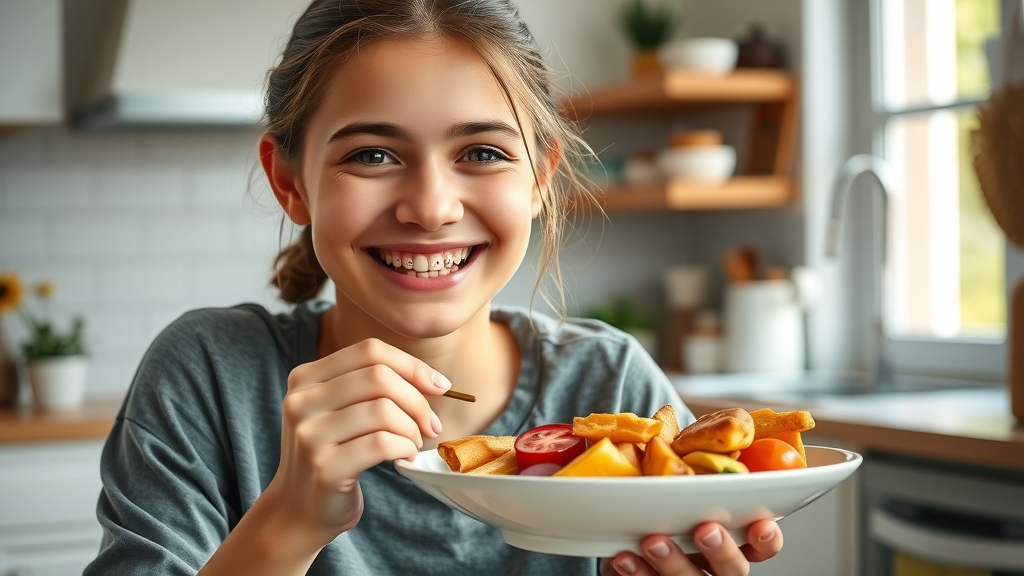

Write A Comment